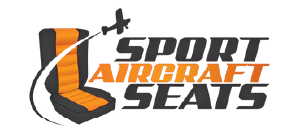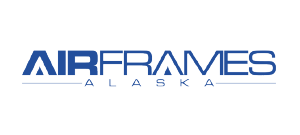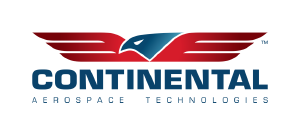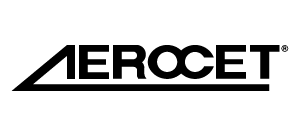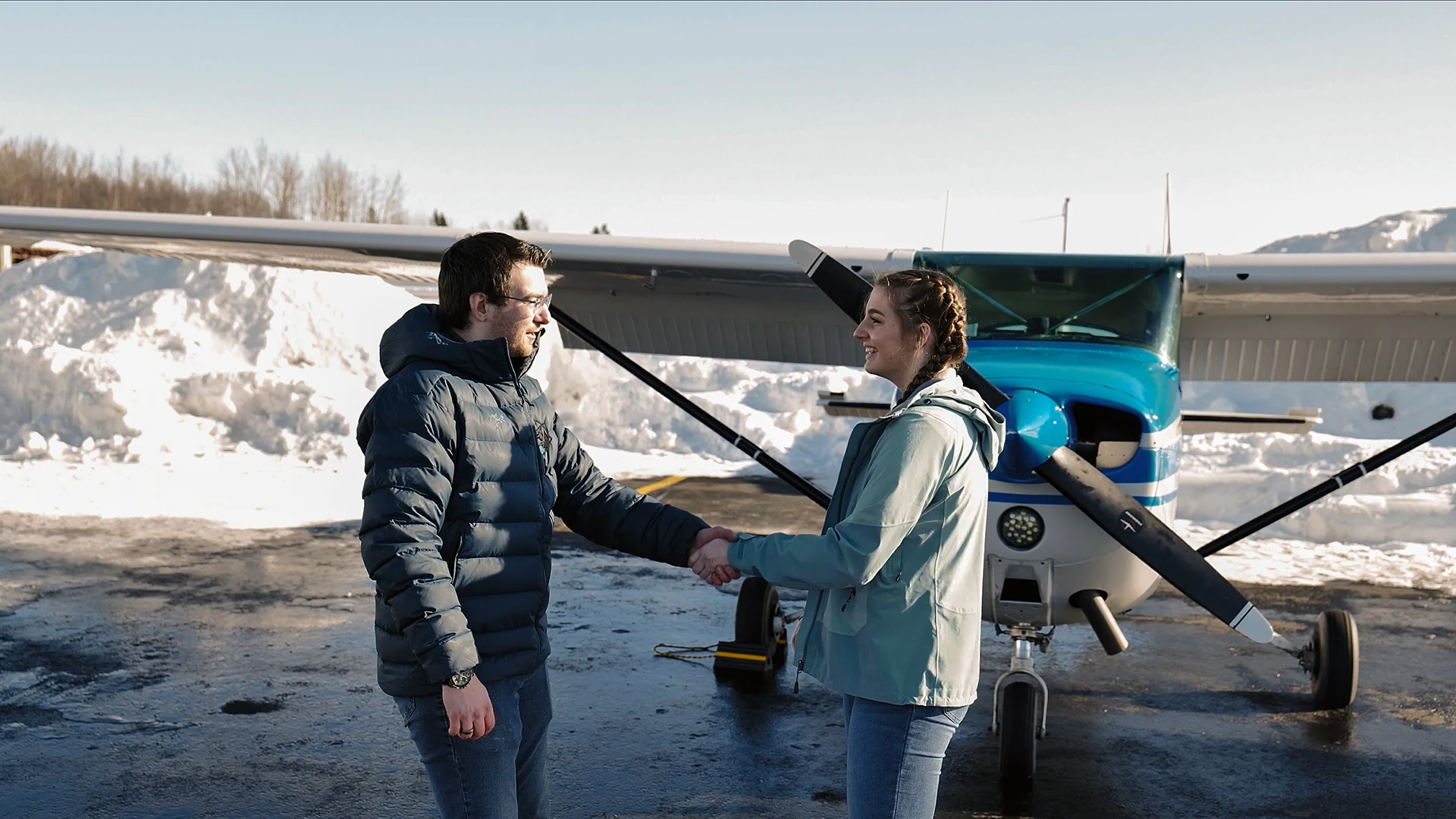
Flight Training
Private,Instrument,Commercial,Multi Engine,and more
01 / Blue River Flight School
Your ticket to the skies.
Join the next generation of professional pilots.
FAA Written Exams
Blue River Aviation is an FAA-approved PSI testing center. Please schedule your written exam through the official PSI website. We are unable to schedule your test for you!
02 / Our flight training Courses
We’re with you every step of the way.
Our Alaska flight school instructors are prepared to answer any and every question you may have, providing guidance and reassurance along your journey of becoming a pilot. Start your flight training with Blue River Aviation’s flight training professionals.
02.
Private Pilot Certificate
02.
Private Pilot Certificate
Whether your dream is to earn your Private Pilot Certificate or you are planning to move beyond private pilot flight training to eventually earn advanced ratings, this step is the most fundamental toward becoming a professional pilot. It is the basis upon which all your flight experience and advanced training will be built upon.
03.
Instrument Rating
03.
Instrument Rating
The Instrument Rating enables pilots to legally operate an aircraft in low visibility conditions, such as in the clouds. In today’s complex airspace system many feel an instrument rating is essential. The instrument rating is necessary for pilots seeking a career in aviation.
04.
Commercial Pilot Certificate
04.
Commercial Pilot Certificate
The Commercial Certificate allows a pilot to fly for compensation or hire. Your flight training will include flying complex aircraft, extensive cross country operations, and acquiring a high degree of aeronautical competency and airmanship at our Alaska flight school.
05.
Multi-Engine add on
05.
Multi-Engine add on
A Multi-Engine add on allows a pilot to operate as pilot-in-command of an aircraft with more than one engine. Multi-Engine rated pilots will experience a remarkable improvement in aircraft performance capability along with an increase in speed, power, and rate of climb.
06.
Float Rating
06.
Float Rating
Blue River Aviation’s flight training school offers seaplane training/ratings in our 180HP Super Cub equipped with Aerocets. During your ground and flight training, you will learn maneuvers unique to seaplanes. Our course includes ground training and up to 8hrs in the airplane. We also offer Seaplane refresher training as well.
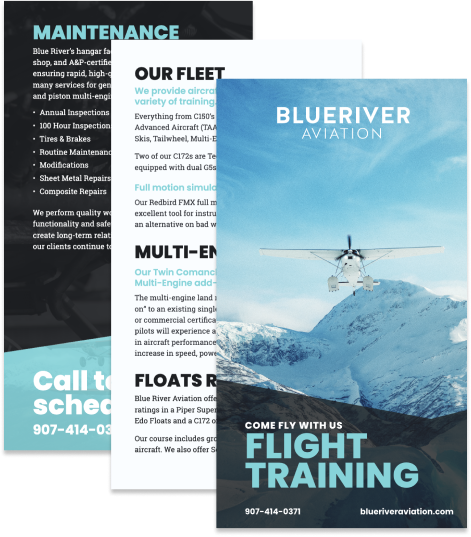
Prepare for take-off with our full course brochure!
Short on time? Take a look at our full brochure that tells you everything you need to know about Blue River’s flight training school’s programs!
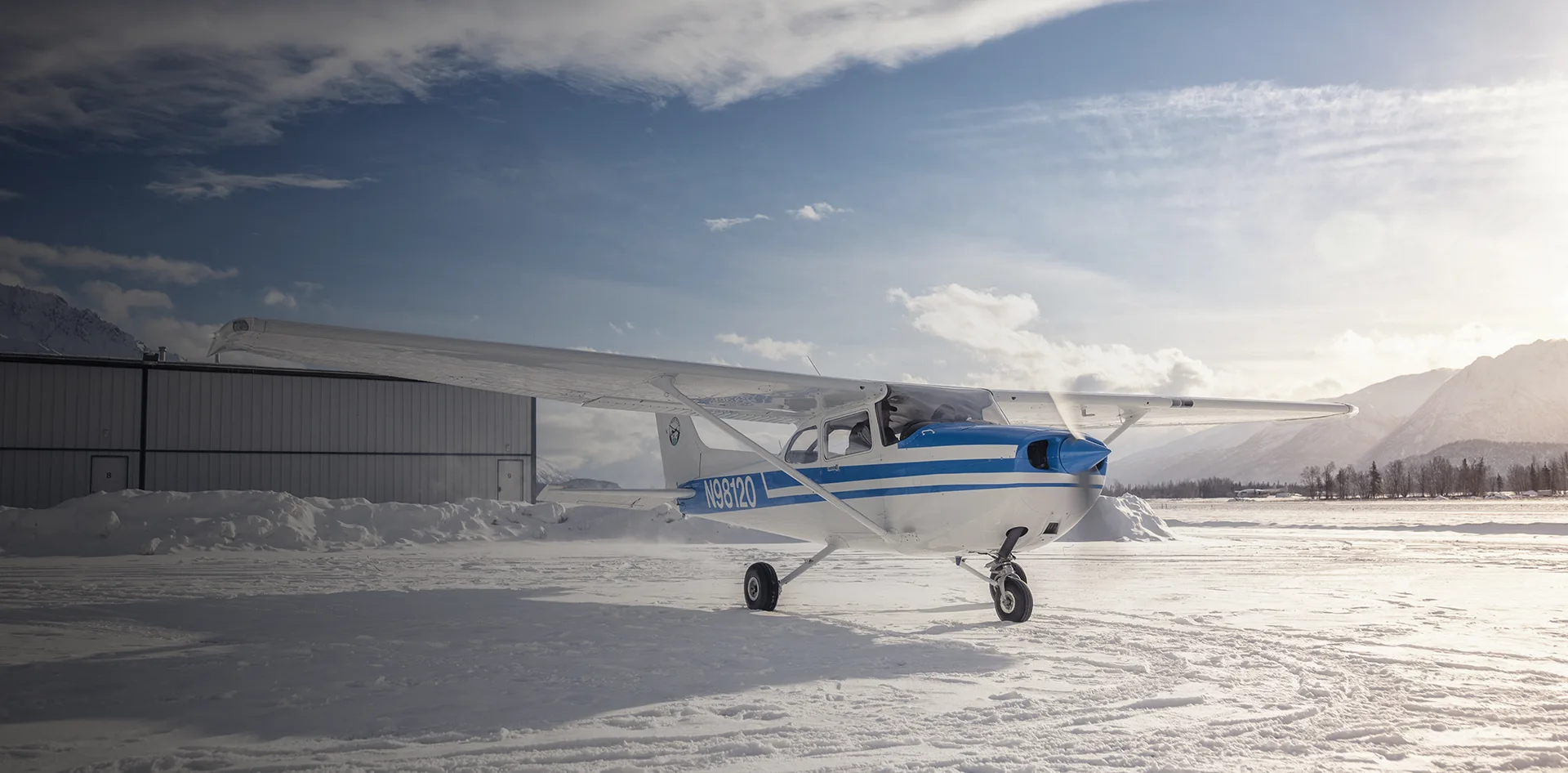
04 / Our Fleet & Rentals
The best airplanes in the business.
Blue River Aviation is proud of our expansive fleet. We provide aircraft for a wide variety of flight training. These include: Technologically Advanced Aircraft (TAA), Complex, Floats, Skis, Tailwheels, and Multi-Engine. Go check out the Blue River fleet!
Still unsure?
Try a discovery flight
The discovery flight is your first opportunity to fly an aircraft with our flight training professionals. You will meet with your flight instructor, have a brief introduction to your aircraft and preflight and then you are airborne! The introductory flight lesson will give you a taste of the fun and excitement of learning to fly.
Any Questions?
Blue River Aviation in Palmer, Alaska offers a variety of pilot courses, including Private Pilot License (PPL), Commercial Pilot License (CPL), Instrument Rating (IR), Float Rating, and more.

